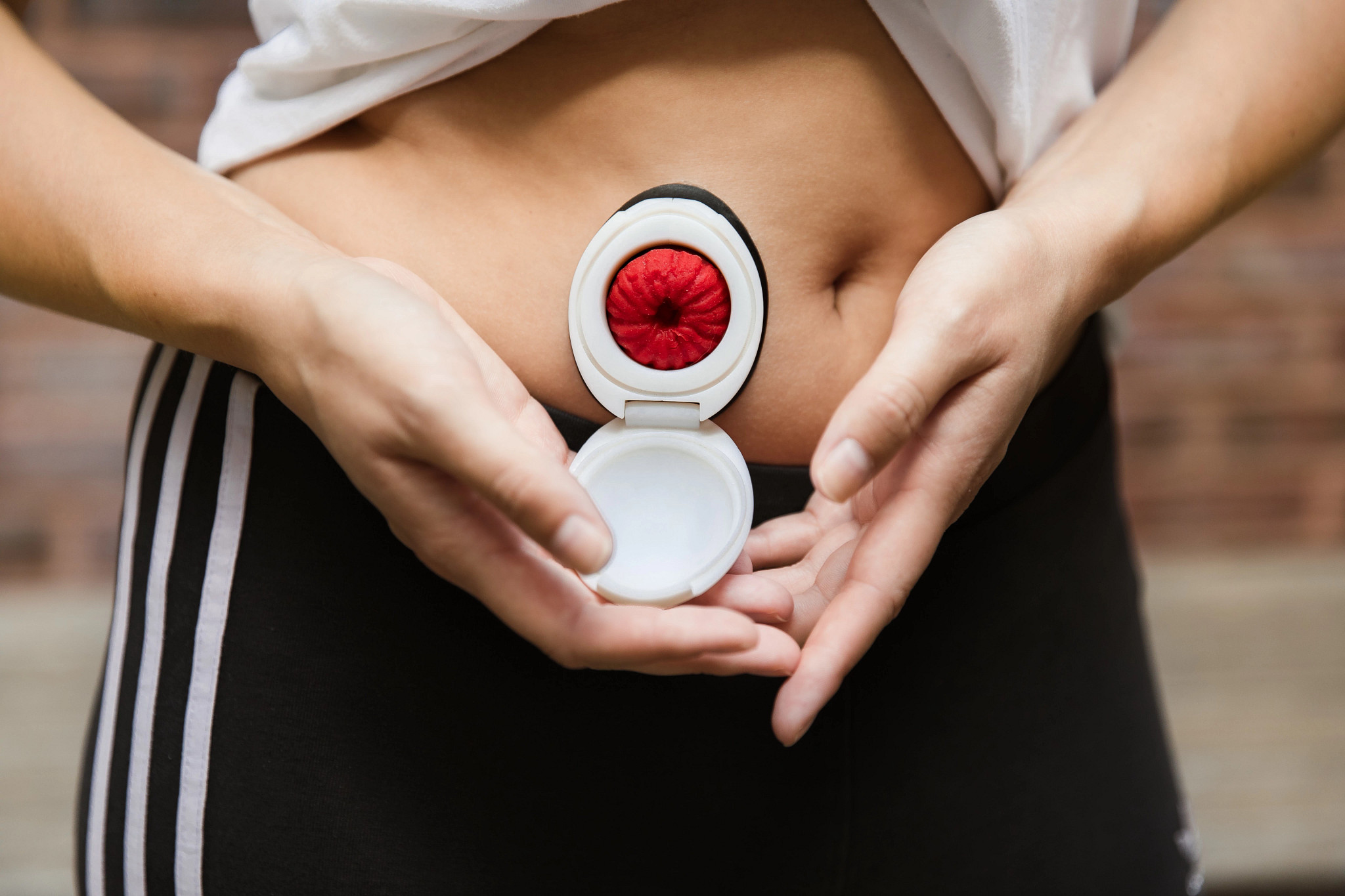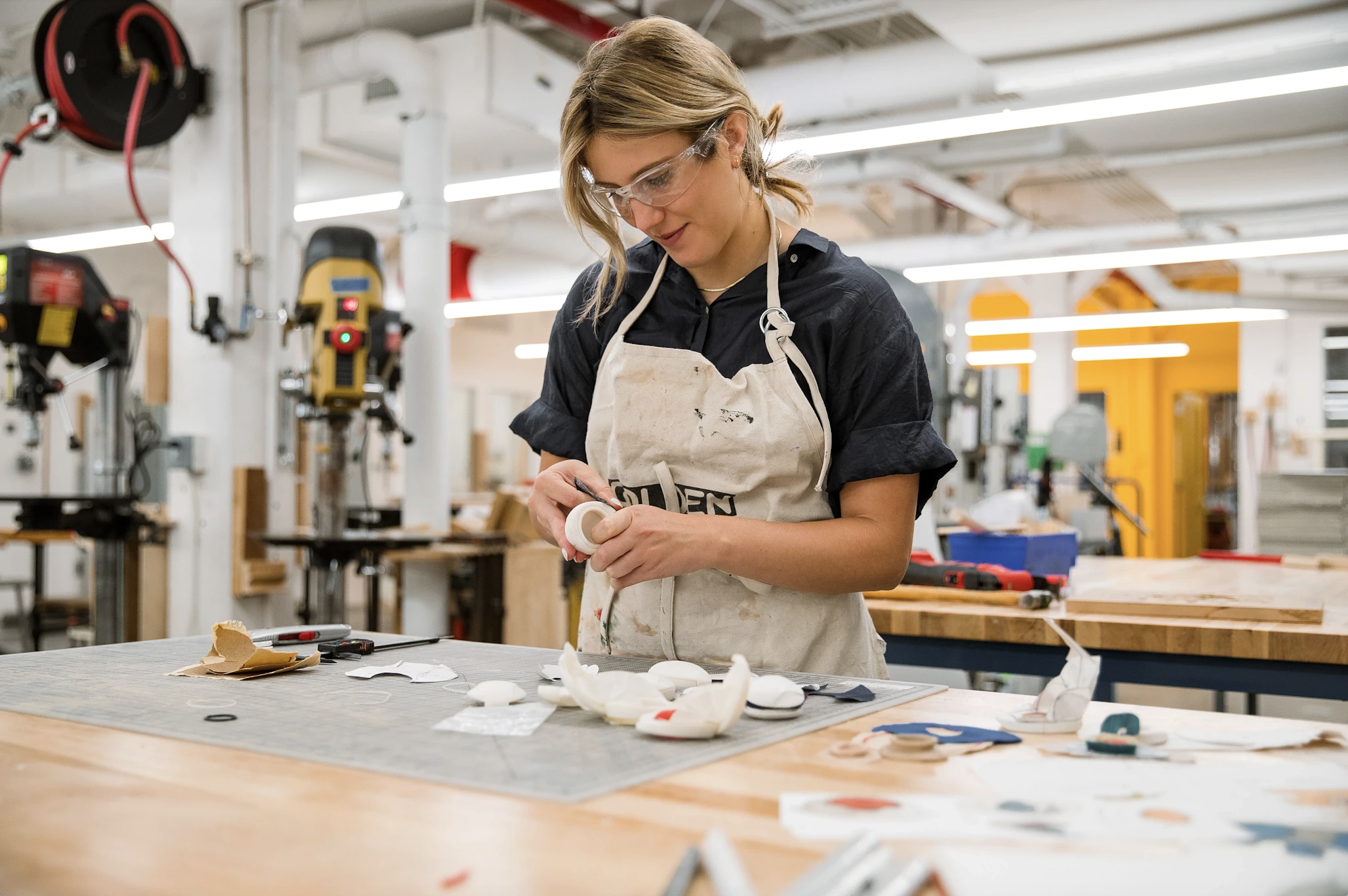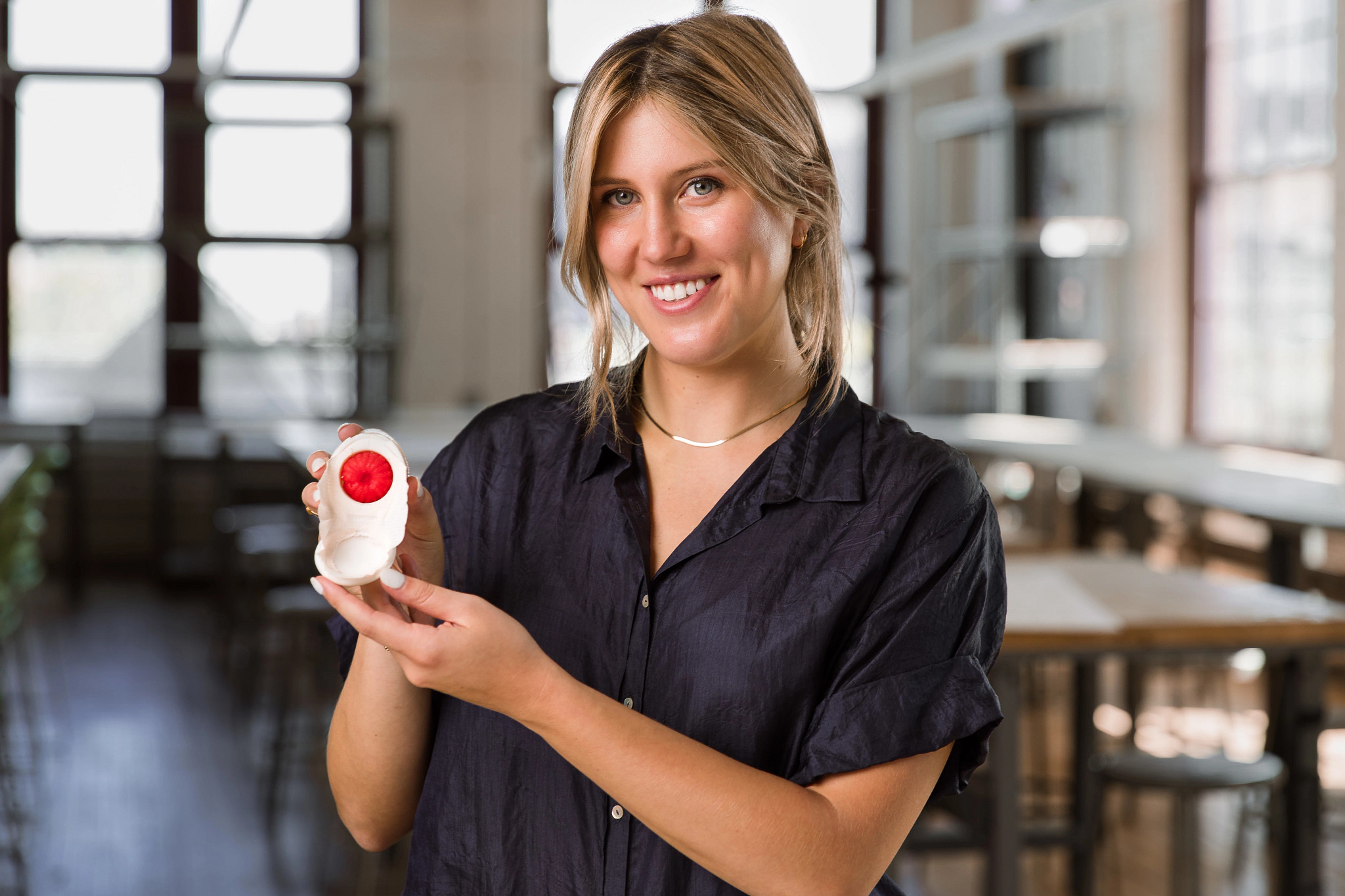Charlotte Böhning, MID ‘23, recently received the National James Dyson Award for her thesis project, the Gutsy Port, an easy-to-wear, customizable device that discreetly controls waste for ostomates.
People undergo ostomy surgery to help them manage bowel movements following an illness or other complication. The procedure creates a hole in the intestine and abdomen, called a stoma, that allows waste to exit the body. The prevailing way to collect and dispose of this waste involves attaching plastic bags to the stoma that have to be worn 24 hours a day.
Böhning learned that many ostomates find bags and accompanying straps and braces to be ill-fitting, uncomfortable, and expensive.
The Gutsy Port responds to these concerns in a number of ways by drawing on design principles from the field of prosthetics. The device’s washability and reusability also controls costs and minimizes the amount of plastic waste generated, following a larger trend across industries toward reducing single-use plastics.

Böhning has interviewed dozens of ostomates around the world, collected extensive ethnographic research, consulted and collaborated with leading medical practitioners including Dr. Alessio Pigazzi, the Chief of Colorectal Surgery at New York Presbyterian and Weill Cornell Medical Center, and created more than 65 prototypes of the Gutsy Port.
She recently spoke about how her time at Pratt informed her approach to design and facilitated the creation of the Gutsy Port, as well as her fruitful partnership with fellow Pratt graduate Mary Lempres, BFA Fine Arts (Painting) ’18; MID ’23.
You worked on the Gutsy Port as part of your thesis project. How did the idea originate?
I joined the MID program in 2020 and we started thinking about thesis projects during the second year. I had always been drawn to medical design and medical devices because I was really interested in how much impact you could have on people’s day-to-day lives and the human-centered design process.
I started talking to my close friend Grace who actually had to undergo ostomy surgery when she was 26 and will have an ostomy bag basically for the rest of her life. We talked a lot about ostomy products and the ostomy care space and how, in her experience, even though the bag definitely improved her quality of life, she still had a lot of issues. We were surprised to learn that the bag has remained the standard of care for over seventy years. And that’s sort of where the initial ideation and brainstorming began. I was like, ‘Okay, how can I, with the help and guidance of Grace and other ostomates, rethink what could be next? What other solutions might be out there for a market that’s been stagnant for so long?’
How did being at Pratt help you advance a complex design project like this?
My thesis advisor, Rebeccah Pailes-Friedman [professor of Industrial Design], was a massive help especially because she’s really experienced with wearables and also textiles. She was able to give me feedback on how to make sure the design could integrate well with the human body as a wearable.
The MID department in general, especially Ignacio Urbina Polo [chairperson of Industrial Design], Anita Cooney [dean of the School of Design], and Matte Nyberg [assistant chairperson of Industrial Design; visiting assistant professor of Industrial Design], were really supportive throughout the process, giving feedback and pushing me to think beyond my early ideas when I was still confined to the bag and I was still thinking that making the bag better had to be the solution.
The thesis advisors do periodic check-ins and all the advisors have different specialties or takes on design. Some focused more on what the emotional experience of a product can be, while others were more technical and focused more on materials or form or 3D modeling. So having all those different voices really guide you throughout the process and push you to think more innovatively was one of the biggest takeaways I’ve had.
What facilities did you use on campus during the design process?
I definitely relied a lot on the wood shop to create low fidelity models that weren’t super time- or money-intensive. The people who work there really know what they’re doing and can help with that initial stage of prototyping. And then once I started thinking about how to get higher fidelity models, the 3D printing on campus was a massive help. There’s a 3D scanner that allowed me to scan a stoma shape or body part and then build CAD [computer-aided design] directly onto that body part. That was really, really awesome to have access to all of those different facilities at Pratt.
The Gutsy Port seems to be part of a growing trend toward reusability and sustainability across product sectors. How much was sustainability emphasized during your time at Pratt?
My friend Mary Lempres and I did a lot of projects at Pratt with different biomaterials and thought a lot about how to make our designs more regenerative for the environment. There’s definitely a lot of focus on sustainability at Pratt. Every class you take in the MID program has a discussion on sustainability. I took a course, Sustainability & Production, with Frank Millero [adjunct associate professor in the School of Design] who was amazing and a big help during my time at Pratt. We learned that even if you’re making products with traditional plastics or something that might seem at face value to be an unsustainable choice, you can still maximize the sustainability impact of the product in other phases of the design process. Pratt teaches you that you have a lot of responsibility when you’re making something that’s going to be put out into the world and used by a lot of people.

How does the James Dyson award help you bring the Gutsy Port to the next level?
It’s been amazing to have the news shared. I’ve gotten a lot of emails from all over the world from people who have stomas, or have a family member with one, expressing interest and really wanting to see this product come to life. That’s been really motivating and really touching.
You get a certain amount of money for being a national winner, and they’ll announce an international shortlist, and that would be super critical. It would allow me to go from a provisional patent to a full utility design patent. It would allow me to do more testing, license the idea, and really bring it to life.
Is there anything else you would like the Pratt community to know?
If anyone is interested or has ideas or wants to learn more, definitely reach out. In terms of Pratt students, especially people in the MID program, I think one of the wonderful things about Pratt is you don’t need to have studied industrial design before. Design is becoming a lot more intersectional and cross-functional. Whatever background you have is a benefit.
